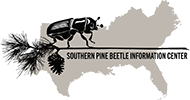Abstract
Drought has promoted large-scale, insect-induced tree mortality in recent years, with severe consequences for ecosystem function, atmospheric processes, sustainable resources and global biogeochemical cycles. However, the physiological linkages among drought, tree defenses, and insect outbreaks are still uncertain, hindering our ability to accurately predict tree mortality under ongoing climate change. Here we propose an interdisciplinary research agenda for addressing these crucial knowledge gaps. Our framework includes field manipulations, laboratory experiments, and modelling of insect and vegetation dynamics, and focuses on how drought affects interactions between conifer trees and bark beetles. We build upon existing theory and examine several key assumptions: (1) there is a trade-off in tree carbon investment between primary and secondary metabolites (e.g. growth vs defense); (2) secondary metabolites are one of the main component of tree defense against bark beetles and associated microbes; and (3) implementing conifer-bark beetle interactions in current models improves predictions of forest disturbance in a changing climate. Our framework provides guidance for addressing a major shortcoming in current implementations of large-scale vegetation models, the under-representation of insect-induced tree mortality.
To read the full article please visit the link below:
Huang, Jianbei, Markus Kautz, Amy M. Trowbridge, Almuth Hammerbacher, Kenneth F. Raffa, Henry D. Adams, Devin W. Goodsman, et al. 2020. “Tree Defence and Bark Beetles in a Drying World: Carbon Partitioning, Functioning and Modelling.” New Phytologist 225 (1): 26–36. https://doi.org/10.1111/nph.16173.
